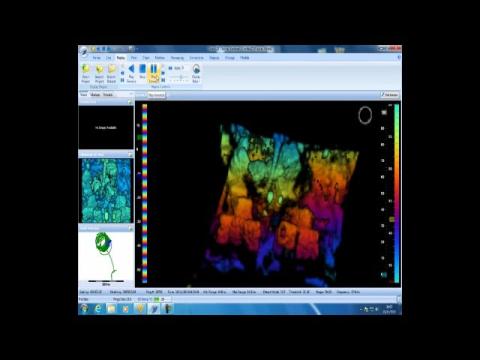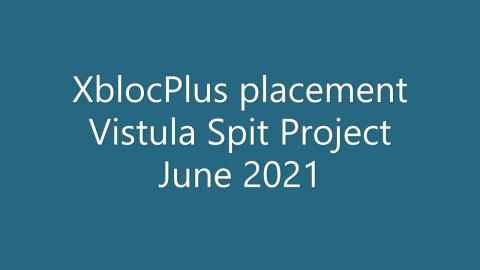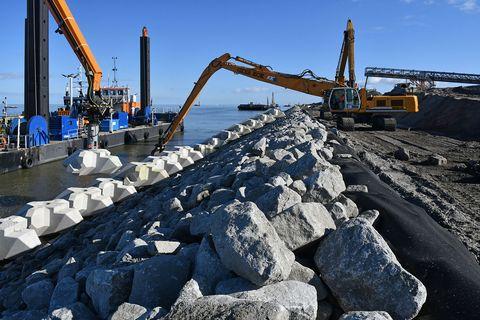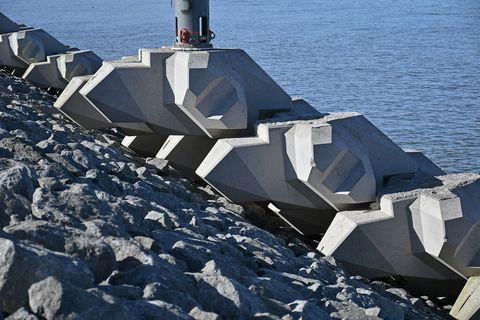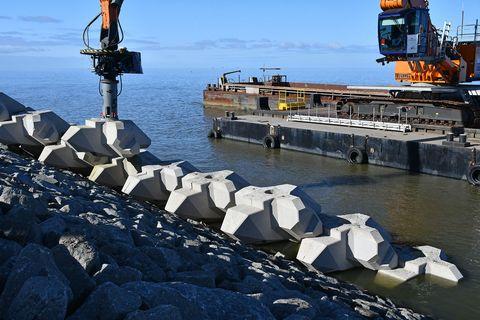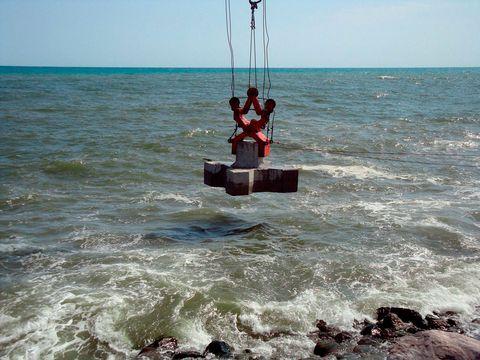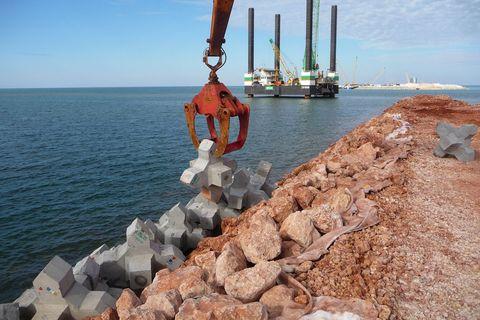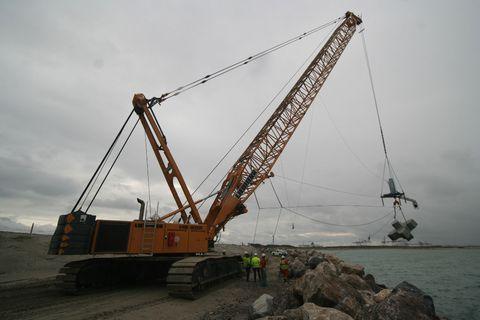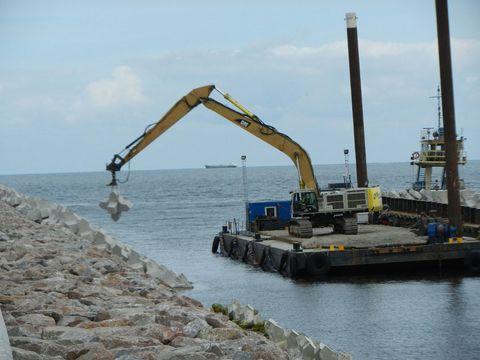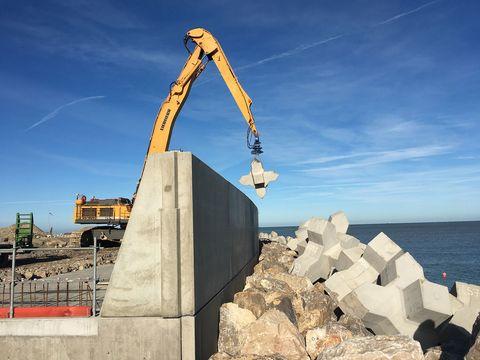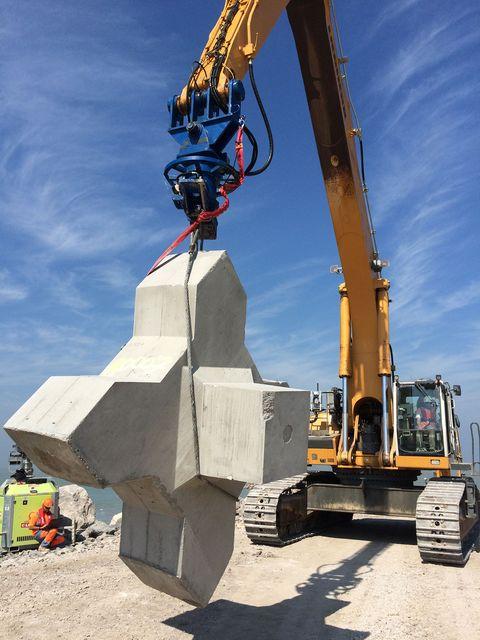












Placement
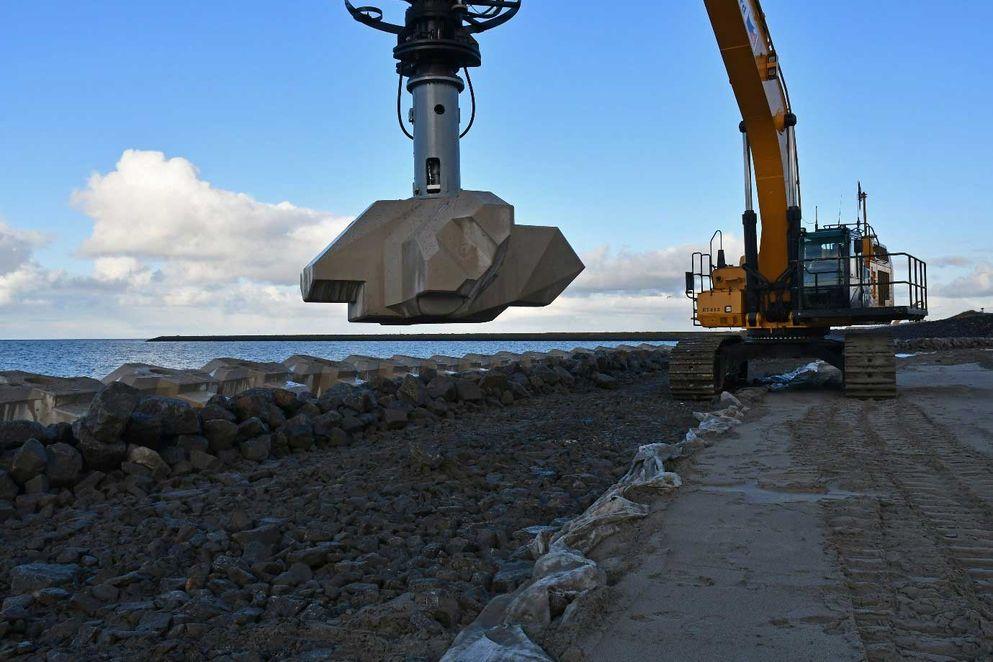
XblocPlus Afsluitdijk, The Netherlands
Placement of Xbloc and XblocPlus is straight forward. The units are placed on predefined coordinates which are provided by DMC. This placement grid is a half brick bond so each unit is placed in between 2 units in the row below and covered by 2 units in the above lying row. This way the blocks get their stability from interlocking with the surrounding units on the slope.
Xbloc units are placed with random orientations, XblocPlus units with regular orientations.
Before the start of the placement process, DMC provides the design coordinates for the units on the basis of the construction drawings. DMC provides the Contractor with instructions prior to the start of the placement followed by a trial placement on land. Placement will start and DMC will provide guidance throughout the construction period.
Xbloc units are placed typically placed with a sling which is slung around the unit by 2 banksmen. The blocks are moved to their position and after a check of proper interlocking, the sling is released with a quick-release hook.
XblocPlus units are placed with a gripper which is inserted into the hole in the unit. This can be done by the excavator operator without the need of banksmen outside on the breakwater.
Underwater placement
For underwater placement of Xblocs the guidance of divers is often used or placement with an echoscope, which is attached to the excavator or crawler crane. With the echoscope the operator is able to see the unit in the sling with its surrounding units and therefore it facilitates easier placement under water.
Placement rates
Based on several projects the achievable placement rate of Xbloc armour units lies between 8-25 units/hour. The Xbloc units can be placed by an excavator or a crawler crane. Highest placement rates are achieved with the use of an hydraulic excavator equipped with a clamp or a quick release hook.
XblocPlus placement rates in the first projects are in the order of 20-25 blocks per hour.

